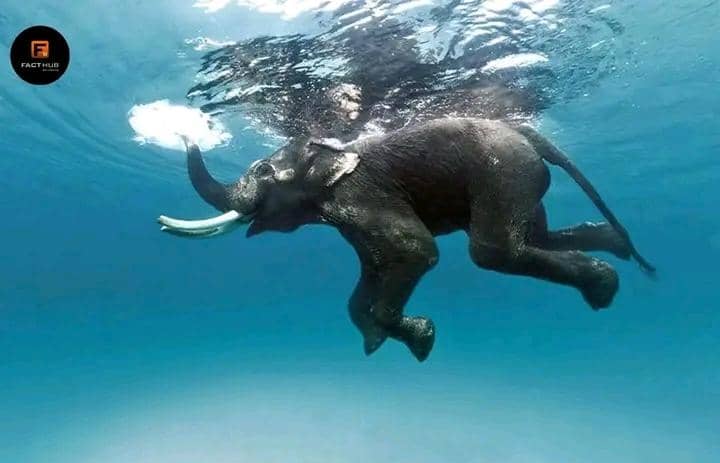Elephants, often perceived as land-bound giants, are surprisingly adept swimmers. Their unique adaptations make them exceptional in the water, allowing them to swim effortlessly over long distances. One of their most notable features is their trunk, which functions as a snorkel, enabling them to breathe while submerged.
This adaptation allows elephants to swim for hours without needing to surface, showcasing their remarkable design and ability to thrive in aquatic environments.
The physical structure of elephants contributes significantly to their swimming prowess. Their dense bones provide buoyancy, helping them maintain stability in the water without floating too high. This buoyancy is complemented by their thick skin and a layer of subcutaneous fat, which together create an ideal balance for swimming.
Elephants can swim up to 30 miles at a stretch, demonstrating not only endurance but also a natural affinity for water.
Swimming techniques employed by elephants resemble the “doggy paddle” style used by humans when learning to swim. They utilize all four legs to propel themselves, with strong muscles in their limbs aiding in steering and movement. Their broad feet act like flippers, enhancing their efficiency in the water.
Additionally, large ear flaps assist in steering and maintaining balance while swimming, further illustrating how their anatomy is finely tuned for aquatic activities.
Beyond mere swimming, elephants use water for various essential purposes. They need substantial amounts of water daily for hydration and cooling off, often engaging in playful splashing and bathing behaviors. Water sources are vital for their survival, especially during migrations when crossing rivers becomes necessary for accessing food.
Elephants also exhibit social behaviors around waterholes, reinforcing bonds within their herds through shared experiences of play and care.
Elephants exemplify nature’s ingenuity through their exceptional swimming abilities. Their adaptations not only allow them to navigate aquatic environments but also highlight the importance of water in their lives.
Whether crossing rivers or enjoying a refreshing dip, elephants demonstrate that they are not just land mammals but also remarkable swimmers capable of thriving in both terrestrial and aquatic realms.

